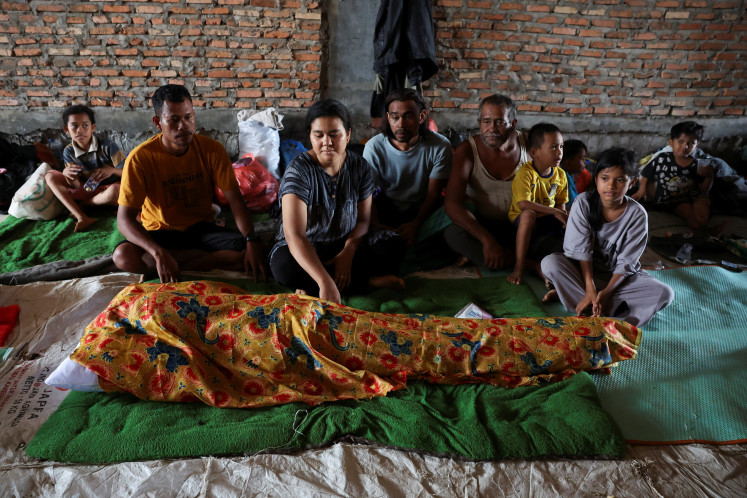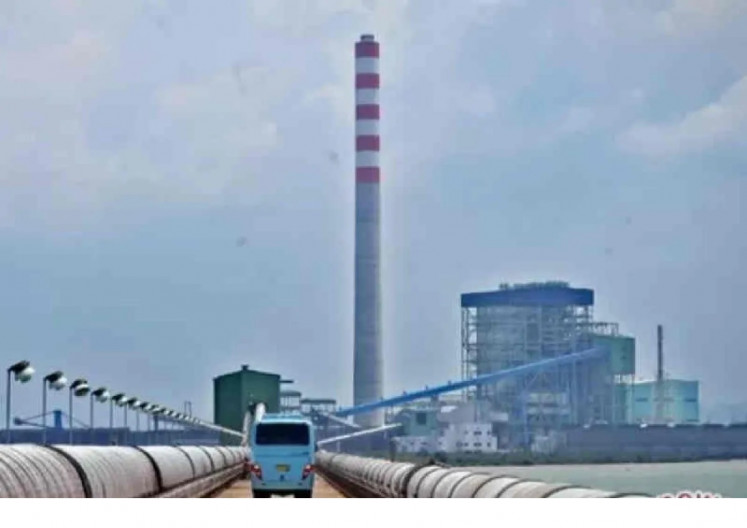Popular Reads
Top Results
Can't find what you're looking for?
View all search resultsPopular Reads
Top Results
Can't find what you're looking for?
View all search resultsRI's geothermal dream may never be a reality
Tapping heat: One of the geothermal wells sources energy from the heat of the earth near the Mount Salak geothermal power plant in Bogor, West Java
Change text size
Gift Premium Articles
to Anyone
T
span class="caption">Tapping heat: One of the geothermal wells sources energy from the heat of the earth near the Mount Salak geothermal power plant in Bogor, West Java. JP/R. Berto Wedhatama
Currently, Indonesia can only utilize 1,226 megawatts (MW), or 5 percent of its total geothermal reserves, despite being surrounded by a number of tectonic plates.
With that geographical position, the largest Southeast Asian economy holds 40 percent of the world's geothermal reserves with a total potential of 29,000 MW scattered across 276 locations to feed energy to its 230 million citizens.
But land acquisition and permit issues that linger on are allegedly the reasons for the stalling of 30 geothermal projects that were launched before and after the introduction of the 2003 Geothermal Law.
'I think this is the point where the government should take an all or nothing approach [to help potential investors]. Otherwise, just shut down all of the geothermal projects in the country,' said Indonesian Geothermal Association chairman Abadi Purnomo in a recent interview with The Jakarta Post.
The association chairman himself former president director of Pertamina Geothermal Energy, a subsidiary of Indonesia's state-owned oil and gas firm Pertamina ' was referring to most geothermal players in the country, who were still 'stuck' in the exploration stages.
Eleven out of 20 geothermal projects launched before the law was enacted are still in the exploration stages with various contractors, including Pertamina Geothermal Energy, according to Energy and Mineral Resources Ministry data.
Nineteen projects launched after the enactment of the law are also still at the same stage. Companies involved in these projects include Supreme Energy ' whose partners include Japan-based Sumitomo and France-based GDF Suez ' Star Energy (owned by mogul Prajogo Pangestu) and Chevron.
The law, which stipulates that working areas and exploration-exploitation work are to be tendered by regional administrations, has held back companies from progressing, with land acquisition and permit issues.
In the most recent case, Supreme Energy decided last month to postpone drilling on its 2x110 MW project in Mt. Rajabasa in Lampung amid local protests that were, ironically, endorsed by the Forestry Ministry.
Energy and Mineral Resources Ministry geothermal director Tisnaldi highlighted the level of 'acceptability' from local communities as one of the main challenges for geothermal firms to operate in Indonesia.
'As for the Supreme Energy case, we [the Energy and Mineral Resources Ministry, the Forestry Ministry, the local administration and the firm] have invited local leaders in Lampung to an existing geothermal project in West Java,' he said over the weekend, referring to Pertamina's 200 MW-Kamojang power plant in Garut, West Java.
He added that Supreme Energy, which plans to invest more than US$800 million for both geothermal exploration and the Rajabasa power plant, could resume its exploration 'soon' on endorsement from the local leaders following the Kamojang power plant visit.
Commenting on the Supreme Energy case, Abadi said stakeholders from the government's side lacked coordination and had different views when it came to geothermal projects.
Energy and Mineral Resources Minister Jero Wacik said at the opening of the Indonesia International Geothermal Convention and Exhibition in Jakarta last month that the government would raise the price of electricity that state power firm PT Perusahaan Listrik Negara would buy from geothermal power plants, to promote business certainty.
Tisnaldi said the new pricing scheme would be applied for new projects but might be open to the currently stalled geothermal projects as well 'if the projects turn out to be unprofitable'.
He, however, did not elaborate on whether already running geothermal projects would also benefit from the new scheme.
In July, last year, the government raised the feed-in-tariff for geothermal power plants from 9.7 US cents per kilowatt-hour (kWh) to between 10 to 17 cents per kWh.
The current prices vary from one region to another, depending on the availability of infrastructure and potential geothermal reserves where a power plant operates. For example, the price in Sumatra is 10 cents per kWh, Java 11 cents and Papua 17 cents.
The new pricing would be based on a power plant's capacity and enthalpy, or heat content.
In the capacity category, power plants will be divided into five groups: over 55 MW, between 20-55 MW, between 10-20 MW, between 5-10 MW and under 5 MW.
A power plant with low-medium enthalpy lower than 225 degrees Celsius, depending on the capacity of the power plant, will have a ceiling price range from 17 to 30 US cents per kWh and that of high enthalpy from 11 to 28 cents per kWh.










